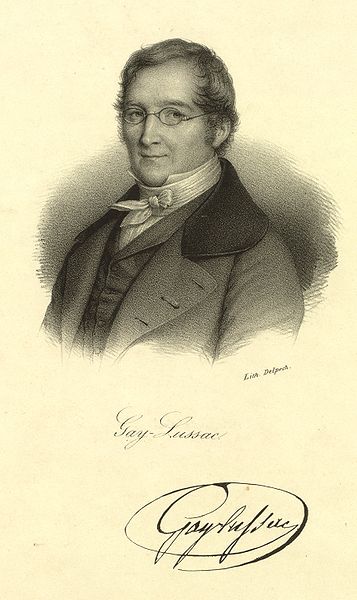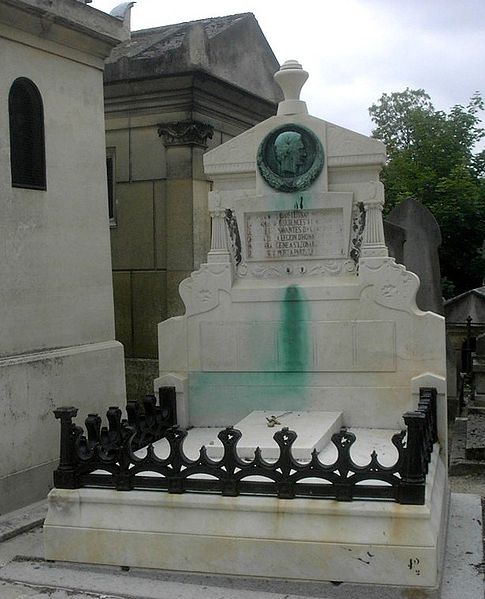<Back to Index>
- Chemist Joseph Louis Gay-Lussac, 1778
- Author Baldassare Castiglione, 1478
- 1st Governor General of Bengal Warren Hastings, 1732
PAGE SPONSOR


Joseph Louis Gay-Lussac (also Louis Joseph Gay-Lussac, 6 December 1778 – 9 May 1850) was a French chemist and physicist. He is known mostly for two laws related to gases, and for his work on alcohol-water mixtures, which led to the degrees Gay-Lussac used to measure alcoholic beverages in many countries.
Gay-Lussac was born at Saint-Léonard-de-Noblat in the department of Haute-Vienne. He received his early education at home, and in 1794 was sent to Paris to prepare for the École Polytechnique after his father was arrested (due to Robespierre's Reign of Terror), and into which he was admitted at the end of 1797. Three years later, Gay-Lussac transferred to the École des Ponts et Chaussées, and shortly afterwards was assigned to C.L. Berthollet as his assistant. In 1802, he was appointed demonstrator to A.F. Fourcroy at the École Polytechnique, where in (1809) he became professor of chemistry. From 1808 to 1832, he was professor of physics at the Sorbonne, a post which he only resigned for the chair of chemistry at the Jardin des Plantes. In 1821, he was elected a foreign member of the Royal Swedish Academy of Sciences. In 1831 he was elected to represent Haute-Vienne in the chamber of deputies, and in 1839 he entered the chamber of peers.
Gay-Lussac married Geneviève-Marie-Joseph Rojot in 1809. He had first met her when she worked as a linen draper's shop assistant and was studying a chemistry textbook under the counter. He fathered five children, of whom the eldest (Jules) became assistant to Justus Liebig in Giessen. Some publications by Jules are mistaken as his father's today since they share the same first initial (J. Gay-Lussac).
Gay-Lussac died in Paris, and his grave is there at the Père Lachaise cemetery.
Some
of Gay-Lussac's descendants live in Brazil, South America and in Ontario, Canada.
In Paris, a street and a hotel near the Sorbonne are named after him as are a square and a street in his birthplace, Saint-Léonard-de-Noblat.